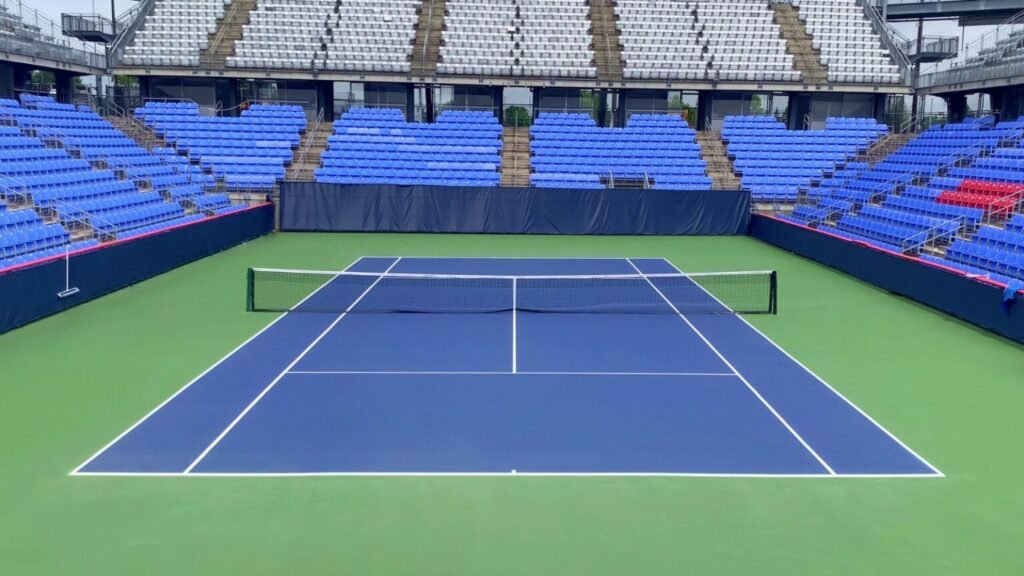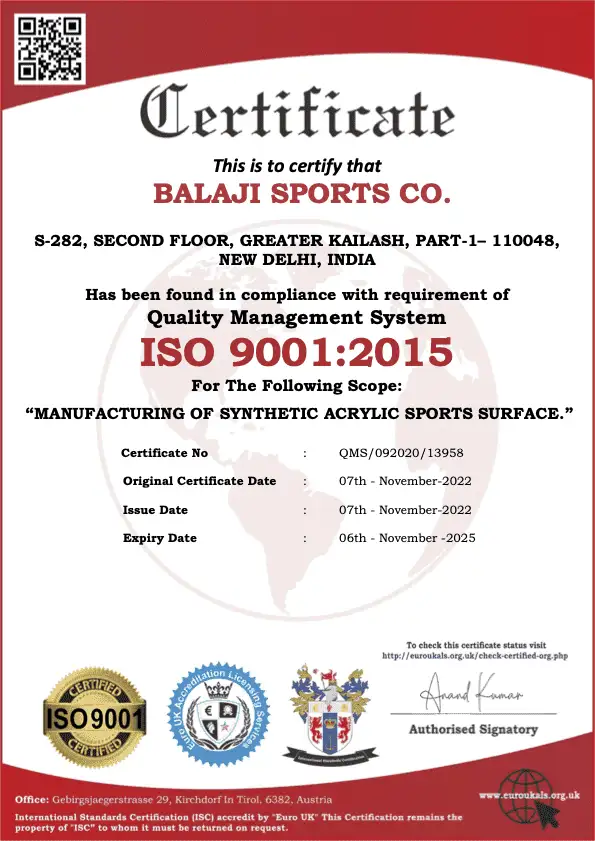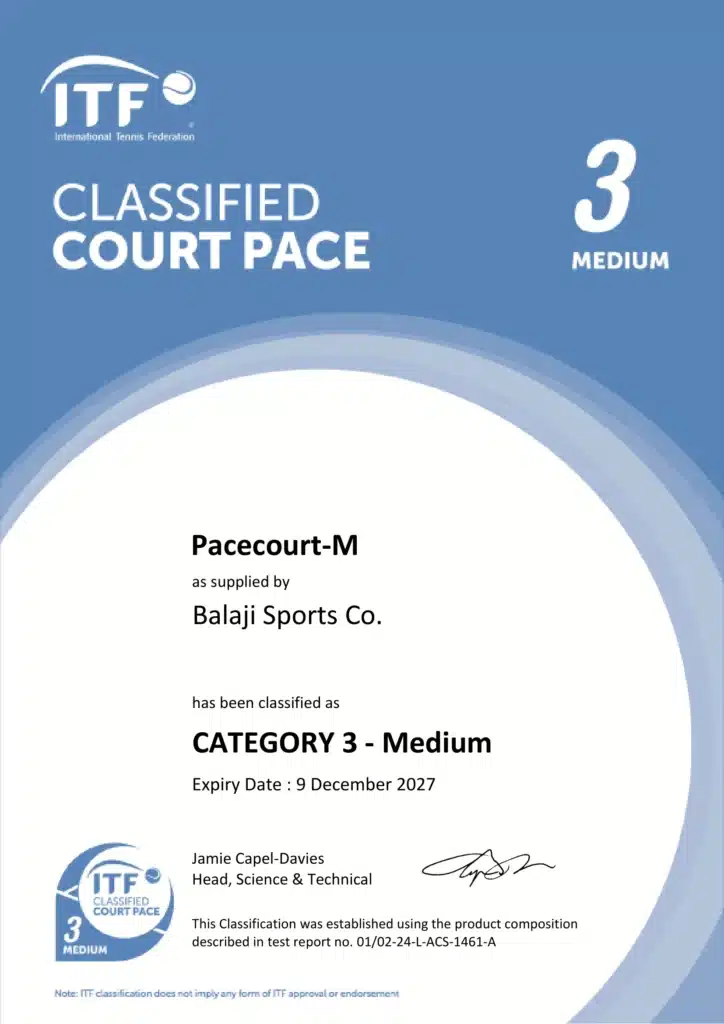How to Select the Greatest Pickleball Court Color Schemes for Performance
Introduction With a game that appeals to players of all ages and combines aspects of badminton, ping pong, and tennis, pickleball has become a global craze. Now more outdoor pickleball courts are available, so choosing the right color scheme for these courts is important. Beyond aesthetics, color greatly impacts how the game is played, how safe it is, and other things you experience on the court. This blog discusses pickleball court color schemes and best practices, emphasizing acrylic flooring and its benefits for outdoor sports surfaces. Why Color Matters in Pickleball Court Design Visual Contrast and Gameplay selection of best pickleball court colors has a direct impact on player motions, ball visibility, and court borders. Players can track the ball more easily during fast-paced rallies by selecting a well-contrasted color scheme, which lowers their chances of missing or making a mistaken shot call. The court’s playing field should be colored so that it stands out from its surroundings, and the boundary lines should be conspicuously different from the surface they are situated on. Safety Considerations Furthermore, pickleball court color combinations may have an impact on players’ safety. For instance, it’s crucial to choose matte paints with no glare if you want your court to be less uncomfortable for players in sunny weather or even when using overhead lamps. Specifically, black paints tend to absorb a lot of heat, which causes variations in surface temperatures. Thus, by keeping an eye on these variables, players can play without worrying about danger on the courts, and pain and potential injuries can be minimized. Aesthetic Appeal Pickleball court color schemes that are not only functional but also visually stunning. An attractive atmosphere can be created in a sporting stadium and can draw attention from spectators and players alike with a nicely designed court painted in complementing and brilliant colors. Additionally, the right color schemes can highlight the values of a certain school or community, bringing some originality to an otherwise straightforward gaming environment. Selecting the Ideal Color Schemes for Pickleball Courts Choosing the Primary Court Color During a pickleball match, people tend to spend their time on the playing surface; therefore, an essential feature of any court is its color. This hue should yeah act as a contrast to the ball which is most times yellow or orange hence popular colors that have been used include shades of green and blue since they are both visible as well as good looking at the surface. Although, green has been regarded as generally relatable to athletic grounds while blue has been perceived as contemporary and refreshing. Accent Colors and Boundaries Accent colors are only allowed around the boundary lines and on portions of the court that are not used for play. As long as the lines can be readily distinguished from one another, they should complement the primary color. Since white provides a striking contrast to any primary color, it is the most popular choice for these lines. Given that there may be problems with adequate line visibility in other inactive on-court areas, such as behind the baseline or immediately before the service zone, where there may be less leeway in terms of color selection, it might be wiser to go with darker shades of the primary colors and light grey. Consideration of Surroundings The other color scheme for the court should carefully take into account their locations and surroundings. The way that these colors complement one another depends on several other factors. For example, it would be advantageous if the selected color was complementary to adjacent structures or vegetation. For instance, blue would be a great primary color choice for well-furnished sports courts tucked away among lush grass, to contrast with the nearby trees. This is also true in other districts, in contrast to some urban neighborhoods that favor muted tints, including earth tones or grays. Acrylic Flooring: The Best Choice for Outdoor Pickleball Courts Durability and Weather Resistance Acrylic flooring would be a great substitute for outdoor pickleball court colors due to its durability and resistance to weather variables. Acrylic surfaces, in contrast to other materials, are resistant to UV radiation, rain, and temperature changes without degrading. Because of the material’s longevity, the court will continue to look great even if it has severe weather the entire season. Customizable Color Options Acrylic flooring comes in a wide range of customizable Pickleball court color. Having a court that meets your functional and aesthetic objectives is easy because there is a wide variety of tones and textures to choose from. It is possible to mix and match colors to make the court’s appearance complement the building or the neighborhood’s tastes. Ease of Maintenance The low upkeep of acrylic flooring is only one of its many benefits. Easy to clean and maintain, smooth, non-porous surfaces are impervious to dirt and debris. This is particularly important for outdoor courts because weather-related factors cause deterioration over time. A well-maintained court looks attractive and remains safe, which makes it more enjoyable to play on. Case Studies: Successful Pickleball Court Designs Case Study 1: A Community Park The intense sunlight and frequent rain that the state experiences have to be considered during the construction of the pickleball court at the community park. As a result, they chose to paint a deep blue acrylic surface as the primary hue, adding white lines to indicate limits and green accents to non-playing regions. Players particularly benefited from this color scheme since it reduced heat absorption due to the dark blue surface and made them stand out against the surroundings, making gaming more comfortable on hotter days. Furthermore, because the ground combines hues, which combine artistic beauty with functionality, many people view it as their playground for competitions or recreational activities. Case Study 2: A Sports Facility The goal of the Chennai-based sports organization was to create. Distinctive pickleball court that would draw in players from nearby communities. They used yellow boundary lines to accentuate the brilliant green hue they chose for the main













